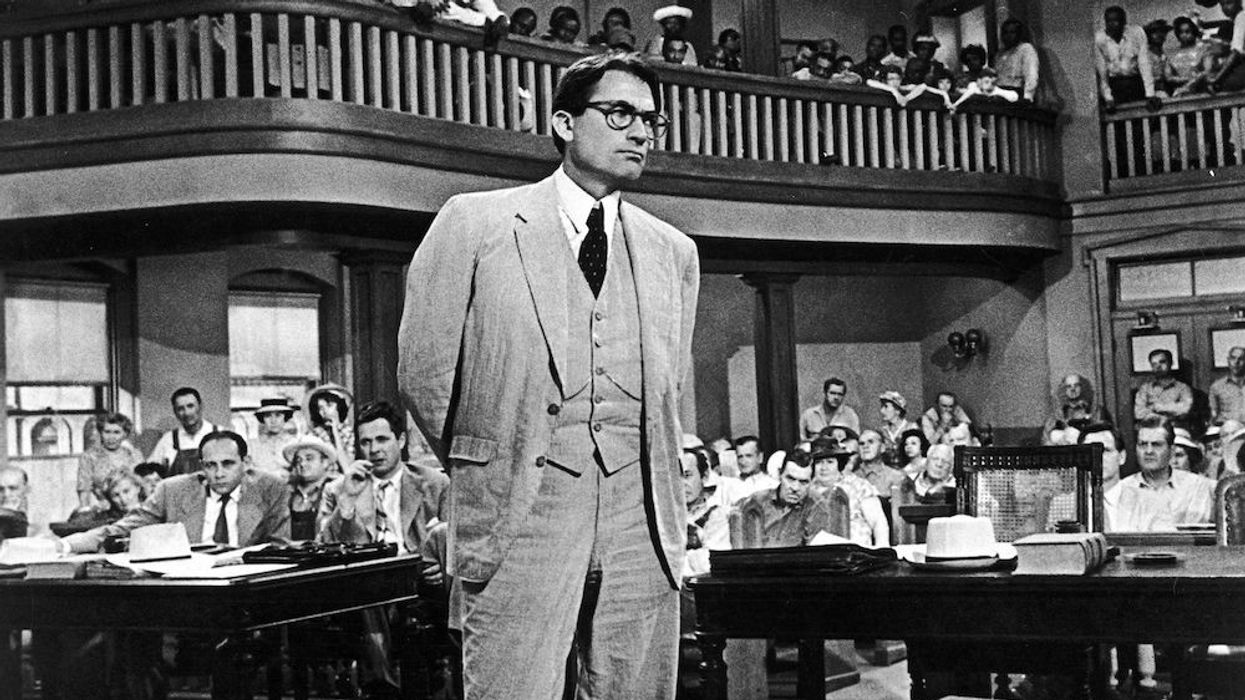A Step By Step Guide to Filming a Courtroom Scene
Need to block a courtroom scene? These tips should help.

There have been some iconic courtroom scenes in cinema. The one in A Few Good Men definitely comes to mind—Tom Cruise's character, Lt. Daniel Kaffee, sets up a line of questioning that gets defendant Col. Nathan R. Jessup (Jack Nicholson) to blurt out his wrongdoing. "You can't handle the truth!"
Others, like Kramer vs. Kramer, And Justice for All starring a young Al Pacino, To Kill a Mockingbird, and more recently, Skyfall, all use the setting as a storytelling tool. In television, legal dramas dominate time slots, so it's safe to say, if you plan on becoming a director or cinematographer in this town, you should probably know how to shoot a courtroom scene.
Luckily, video essayist Jack Nugent of Now You See It covers the topic via the aforementioned movies above, among others, including My Cousin Vinny, a film that plays out almost entirely inside a courtroom. If you haven't seen the iconic movie yet, it's definitely worth a spin. Joe Pesci, Marisa Tomei, and to a smaller extent, Ralph Maccio post-Karate Kid are all in it.
Okay, ready? Let's go to court.
Consider the space
The production design of the location is going to dictate camera placement and blocking. If it's too small, it will limit what you can do. If it's too big, what does that say about the emotion of the scene or the story? If you plan on following the 180-rule, a guide that gives the audience information about the spatial relationships between characters and objects, there's even more to consider when storyboarding the scene.
Even if you do plan on breaking the rule, it's important to give the audience a sense of the space either through blocking and/or camera movement. This way, when the camera does move, it won't be as jarring to the audience and they can stay immersed in the story, whether that be sharing the perspective of the jury, prosecution, or someone watching in the courtroom.
Scenes within a scene
One of the difficulties in filming a courtroom scene is the number of characters. Between the jury members, teams of lawyers, and justices in the courtroom, there's a lot of people to keep track of. Instead of trying to show it all, try breaking down the movements and the dialog between the characters as a different scene. A sum of parts if you will. If a lawyer is examining a witness, think of that as one mini-scene. How can you block that moment? How does the camera move in the frame?
Then as a lawyer talks to the judge or expresses an idea to the jury, think of how that moment can be blocked differently yet still be connected to the overall through-line of the larger scene. Doing it on a micro scale can help you better visualize each moment. It may also help you look at a piece of unassuming dialog in a different way.
Framing
Where and how the camera is positioned is something that you can tinker around with for hours. Days even. Do you shoot a close-up, a medium close-up, a wide shot, does the camera move. How does it move? Does it pan or dolly? Does it change focal lengths with a zoom lens? These are all important decisions and should speak to the visual grammar of the movie as a whole. You necessarily don't want to break the style of the film for one specific scene, but if it calls for it, it's something to consider.
Close-ups tend to be used to show the emotion of a character. But, you could draw out emotion another way by including the reactions of those in the courtroom. Doing so adds an emotive layer to what's being said. It's similar to the idea of showing someone's reaction to a character dying or at the alter for "I do." It tells the audience it's okay to feel what they are feeling.
Above all, it's important that the camera doesn't confuse the audience to the point that they lose interest in the story. When you consider what serves the story first, everything else will start to fall into place.
Source: Now You See It











